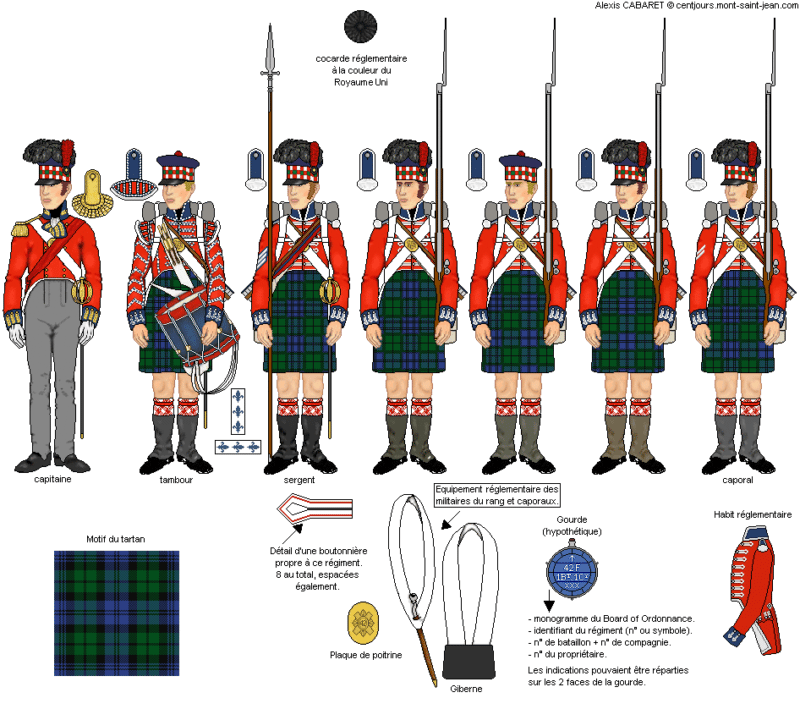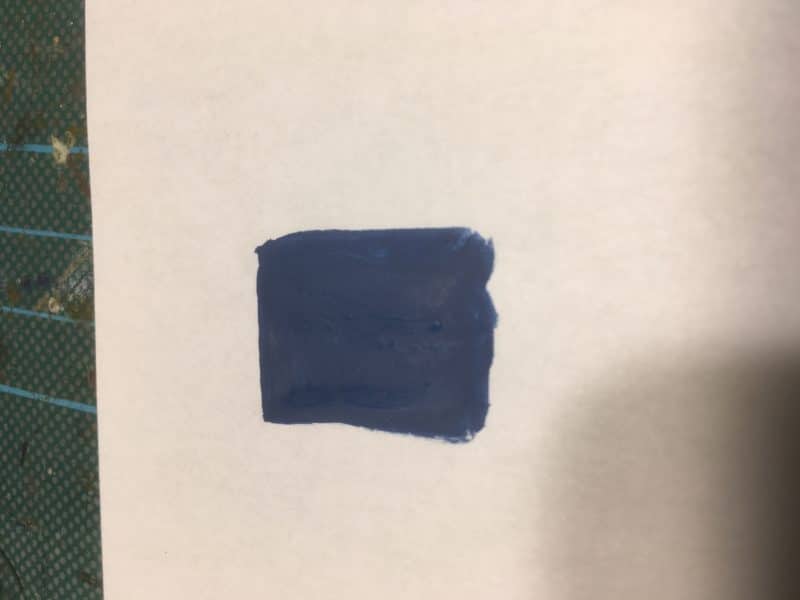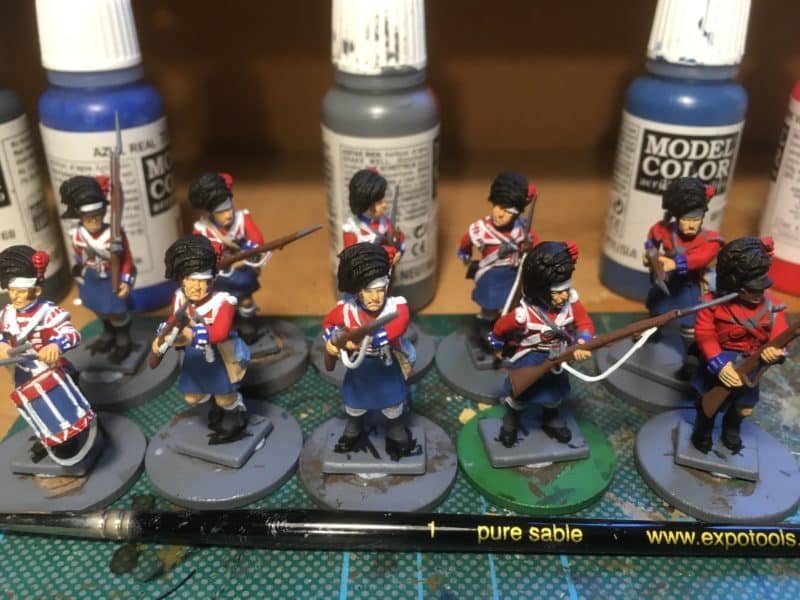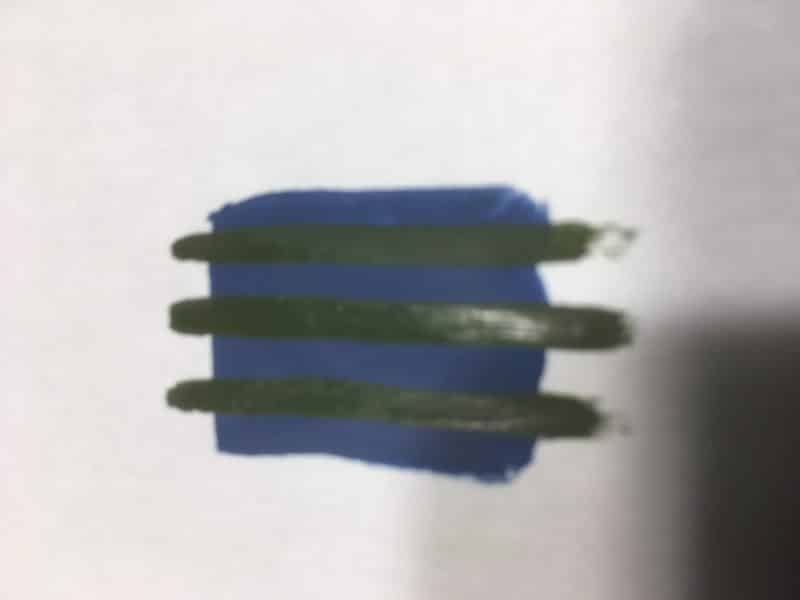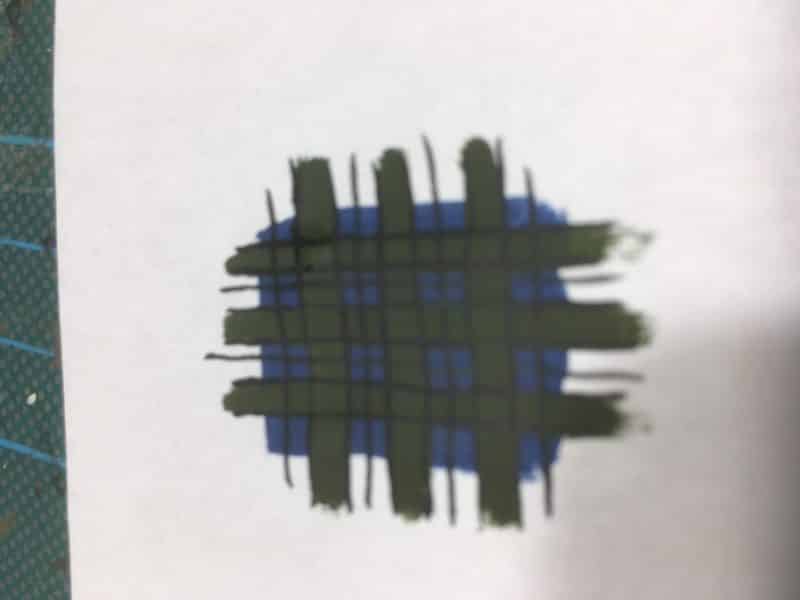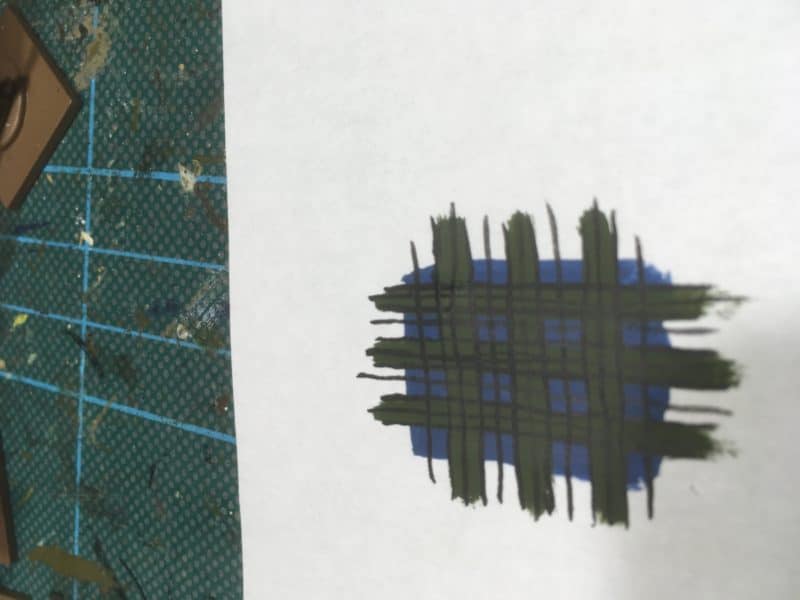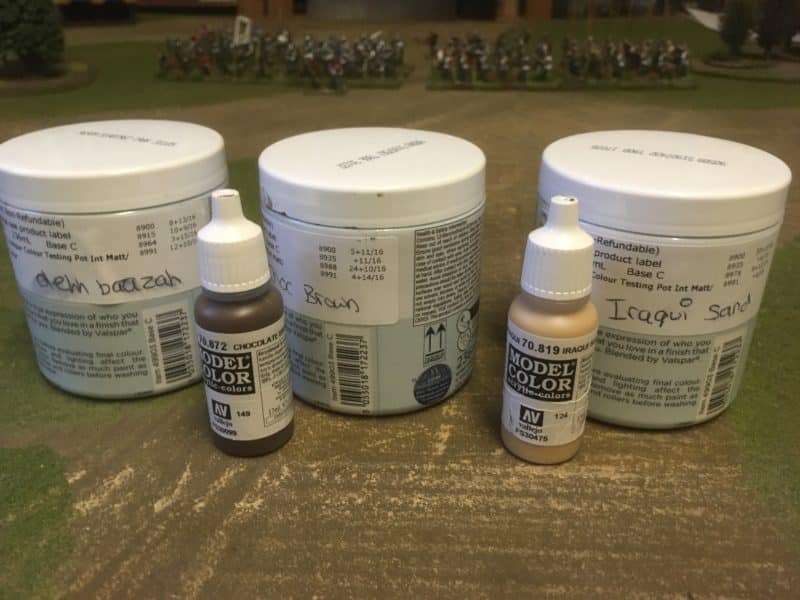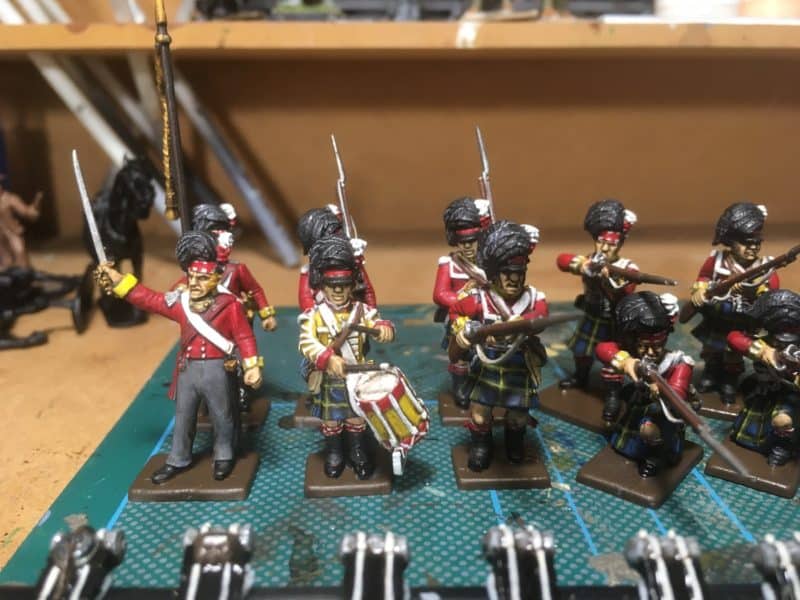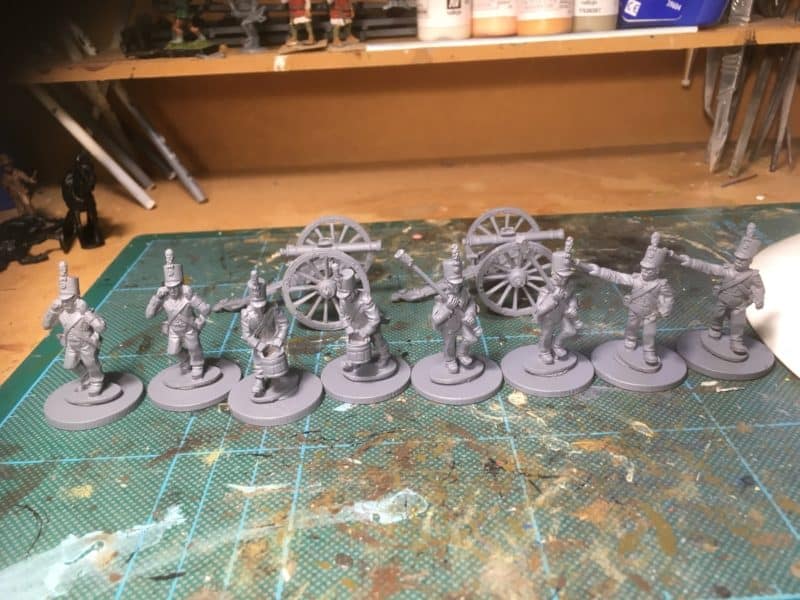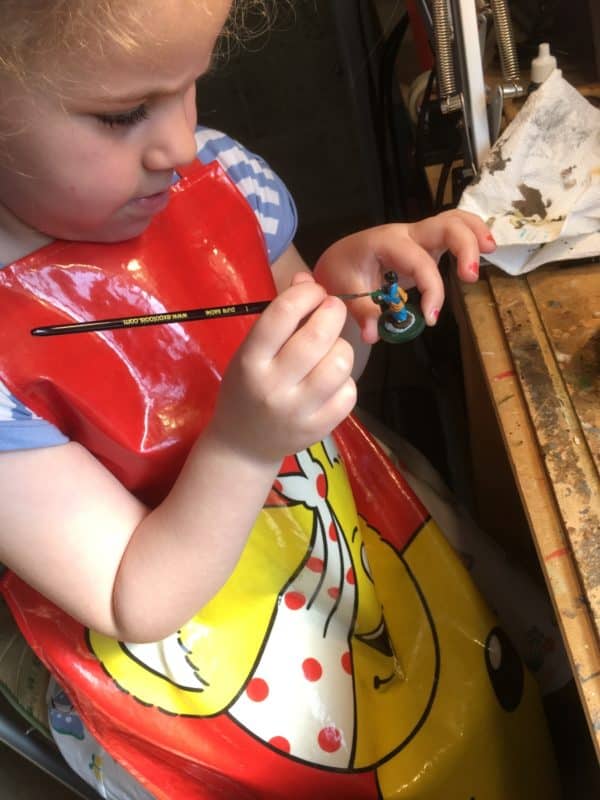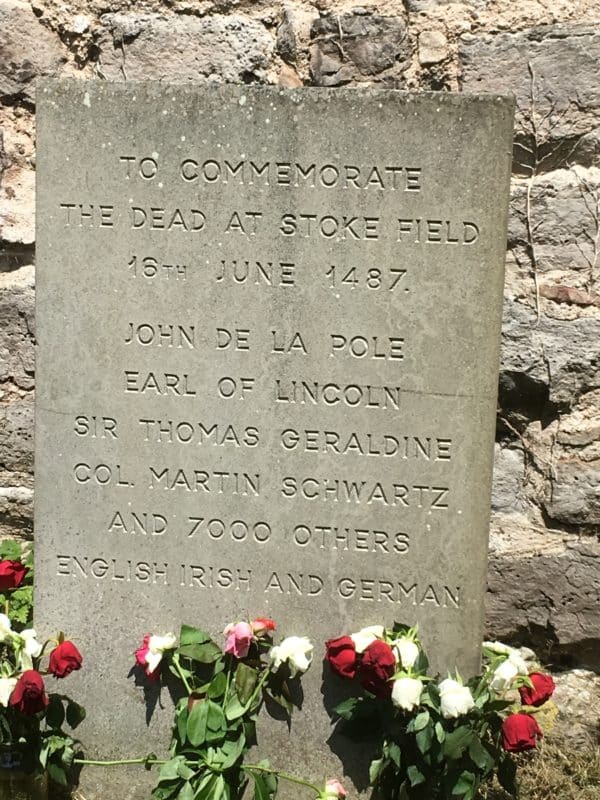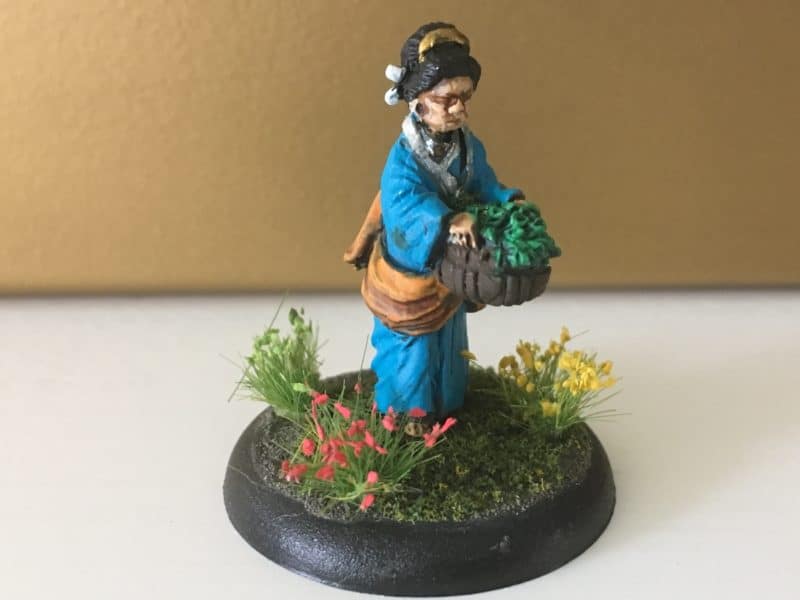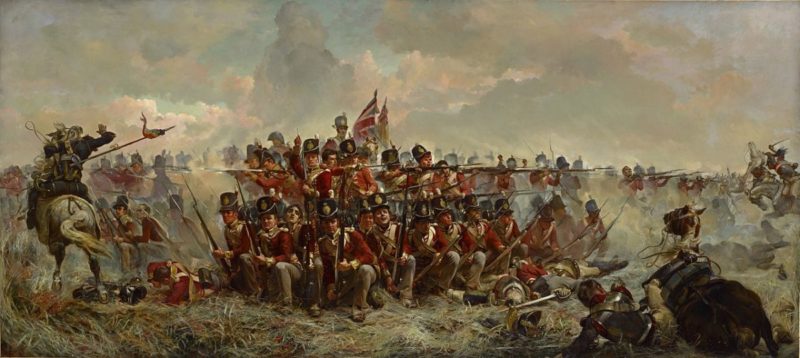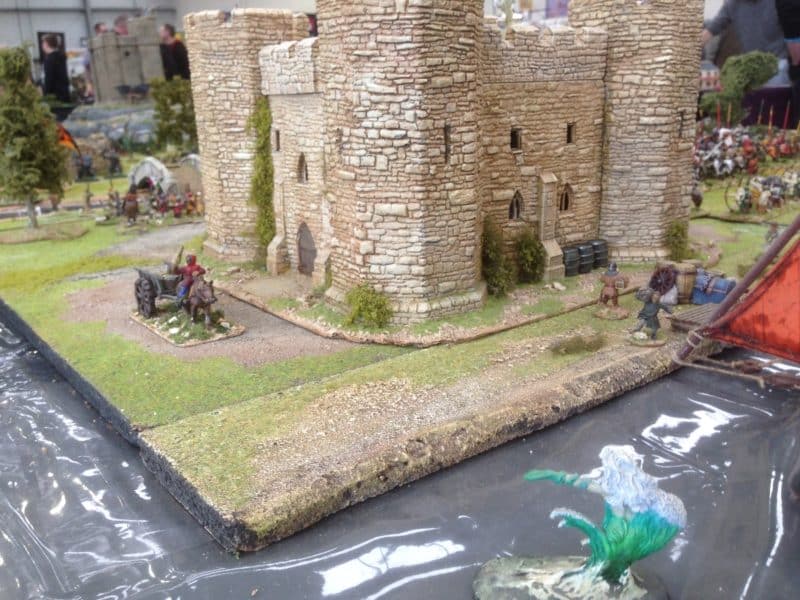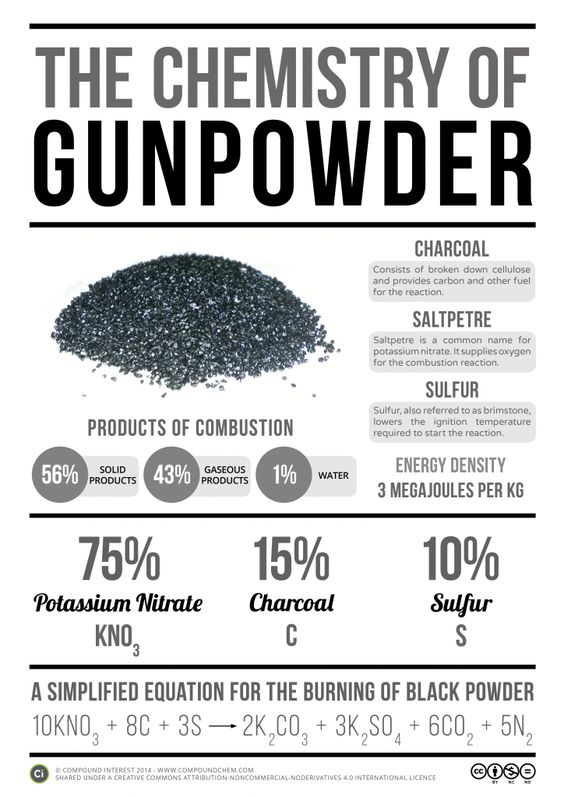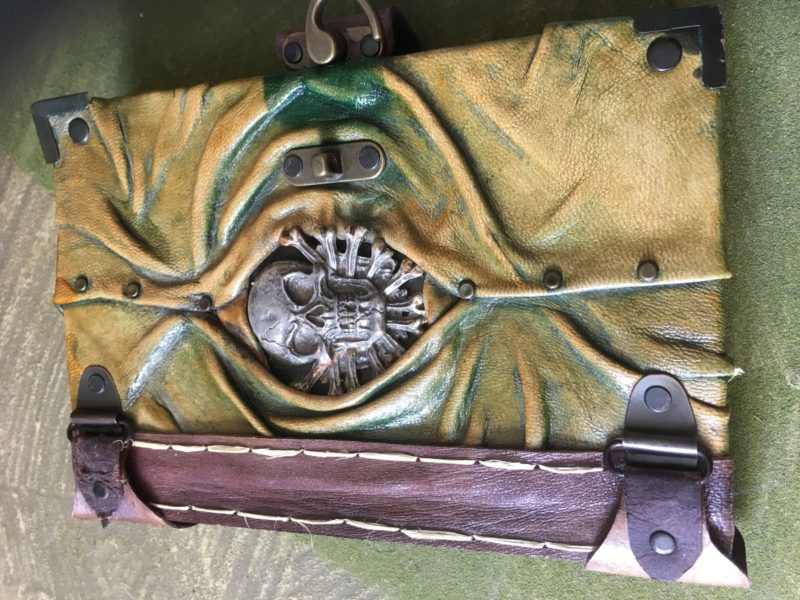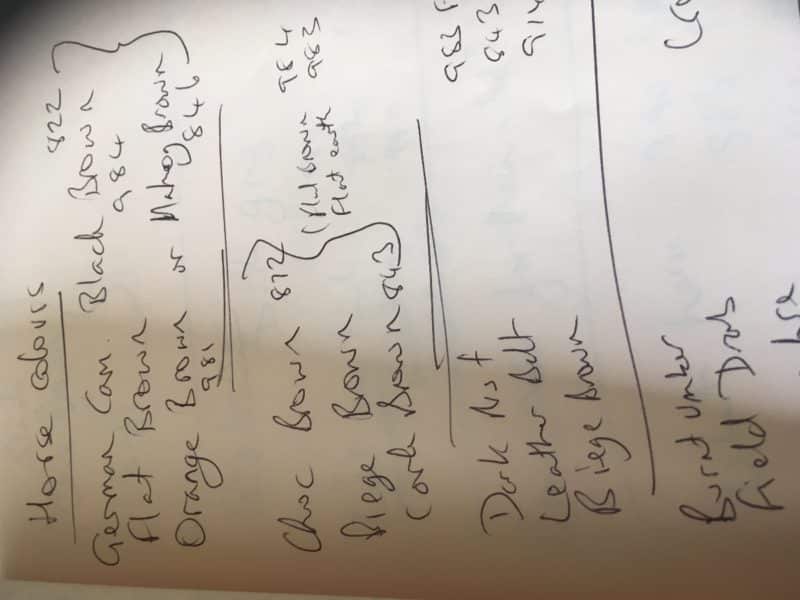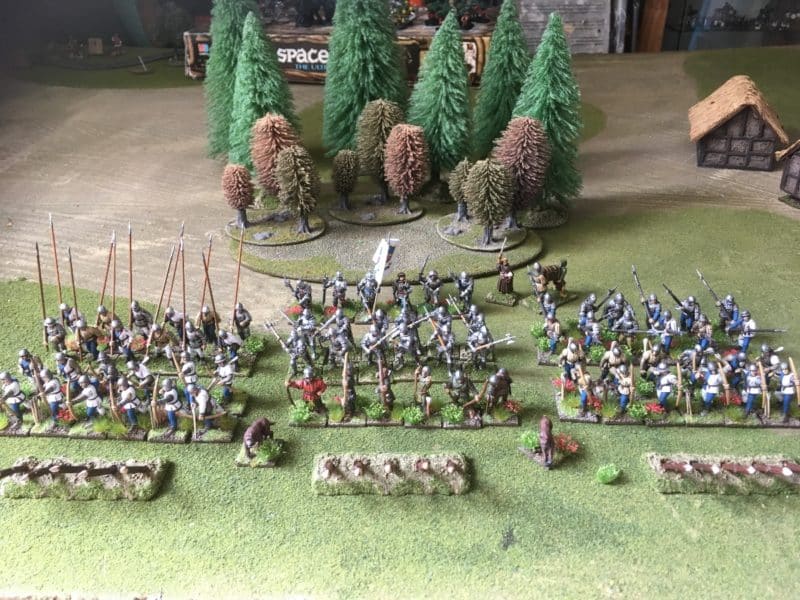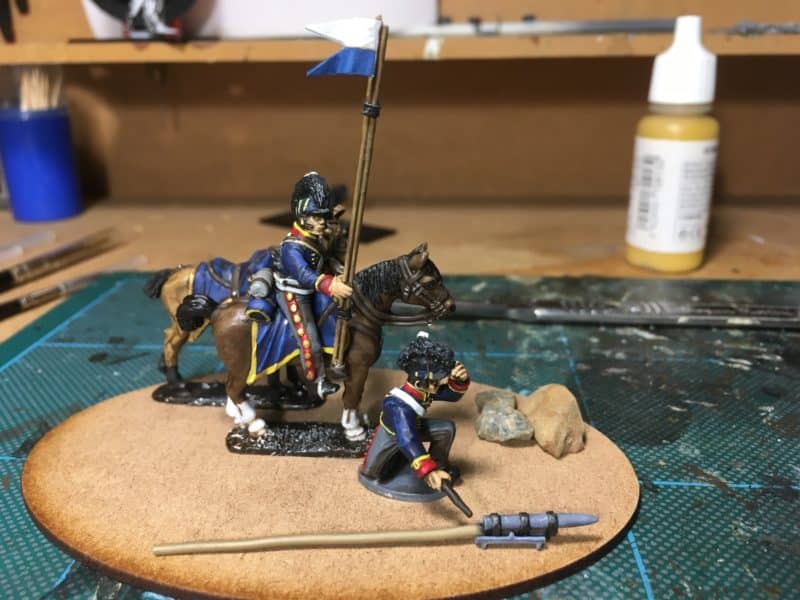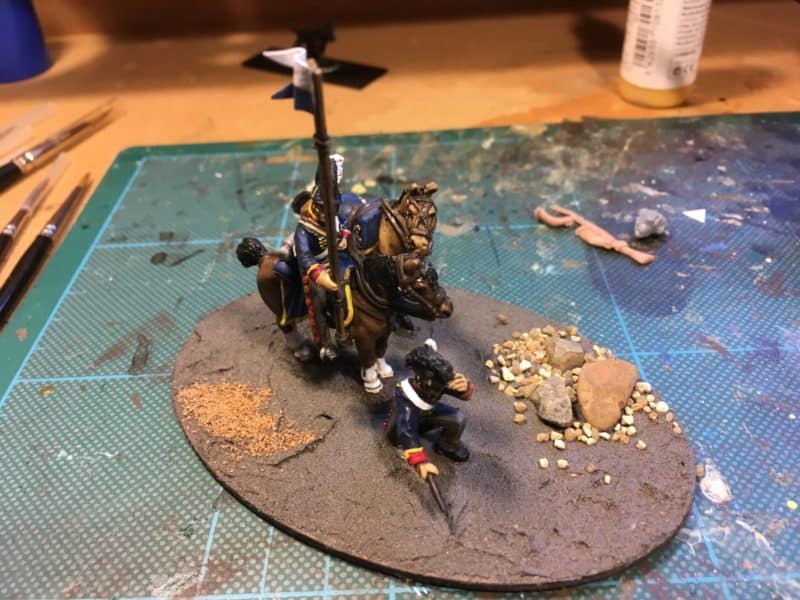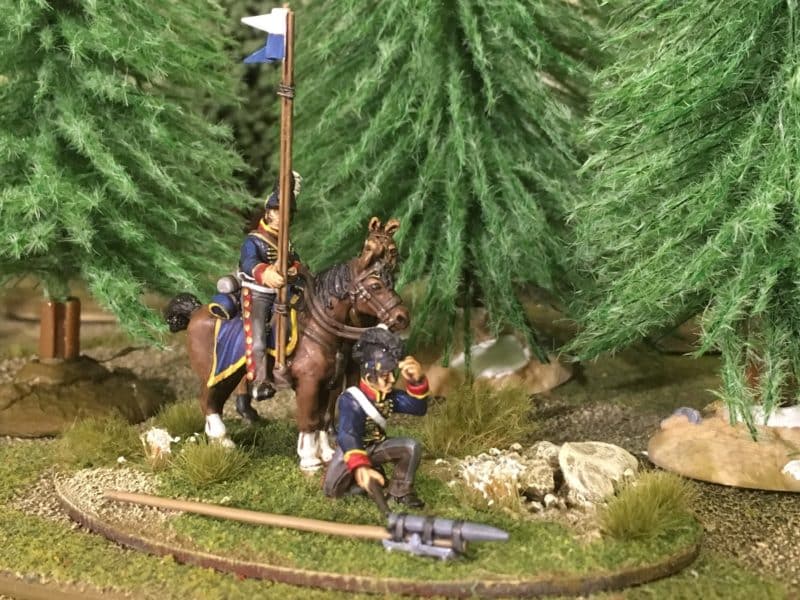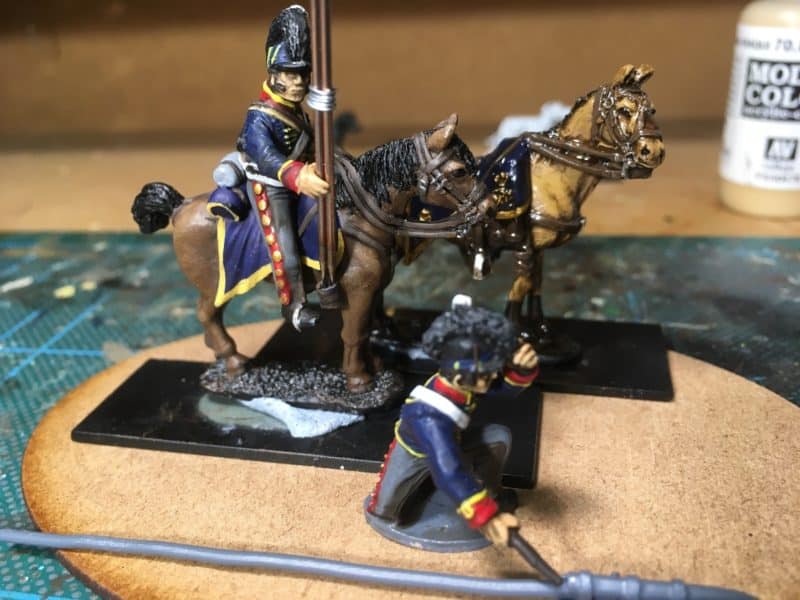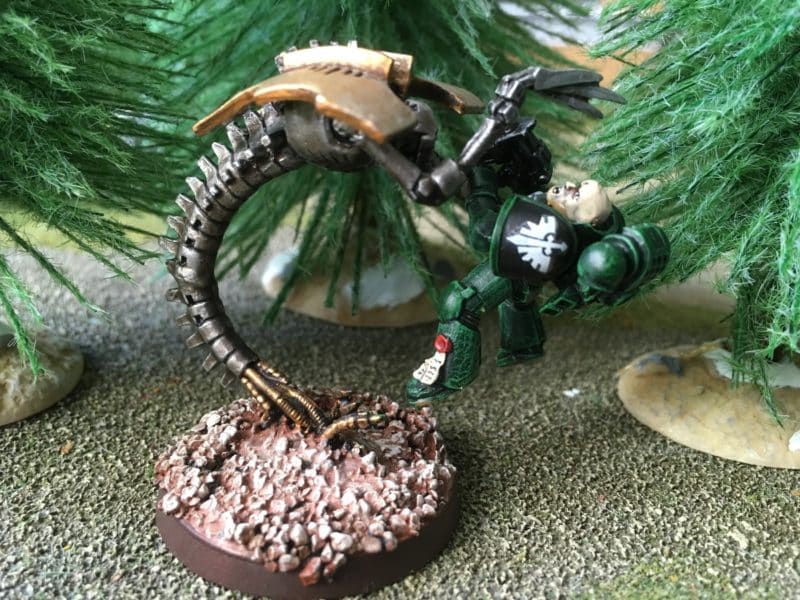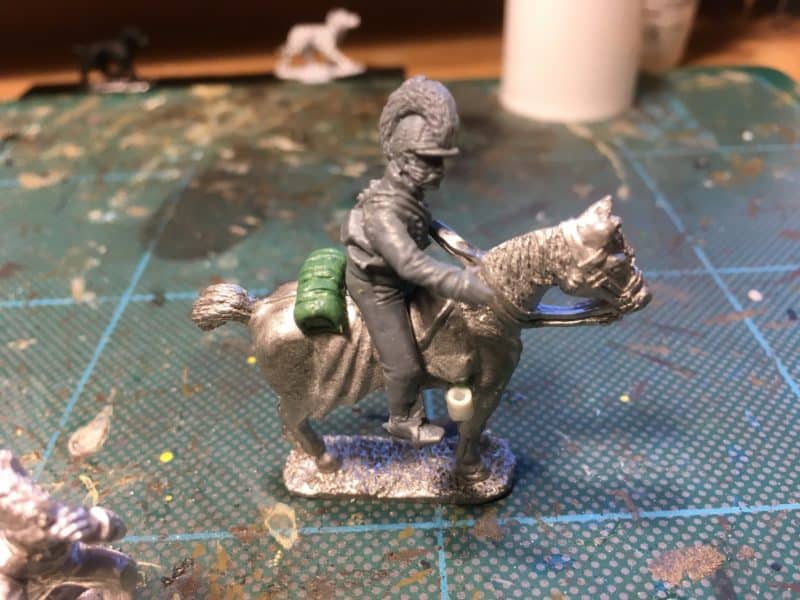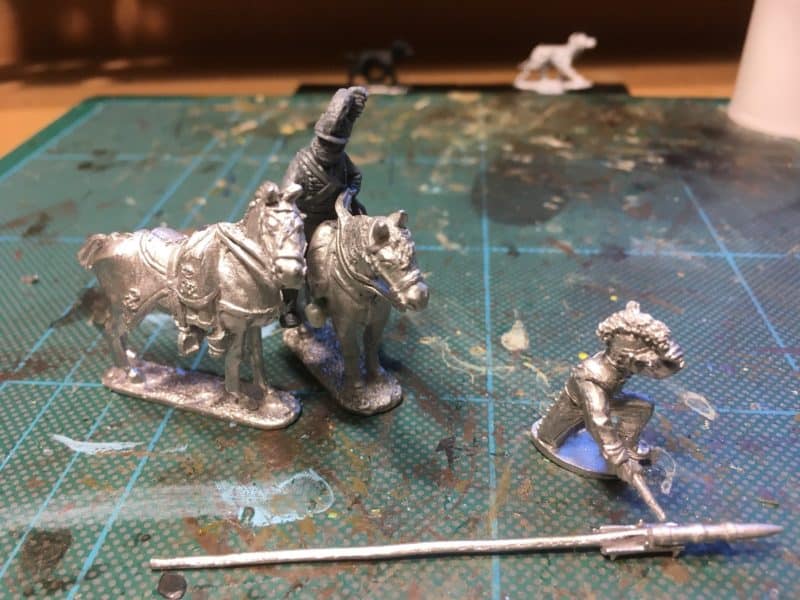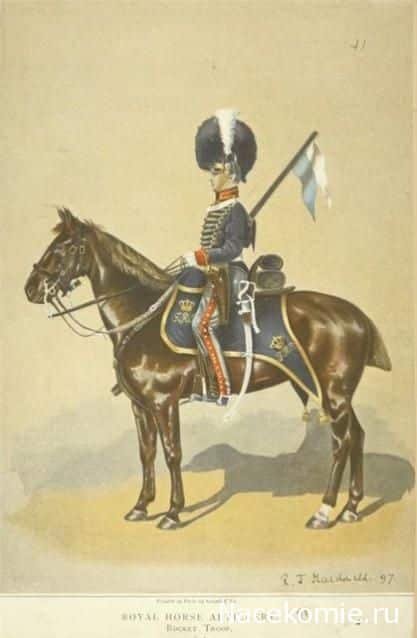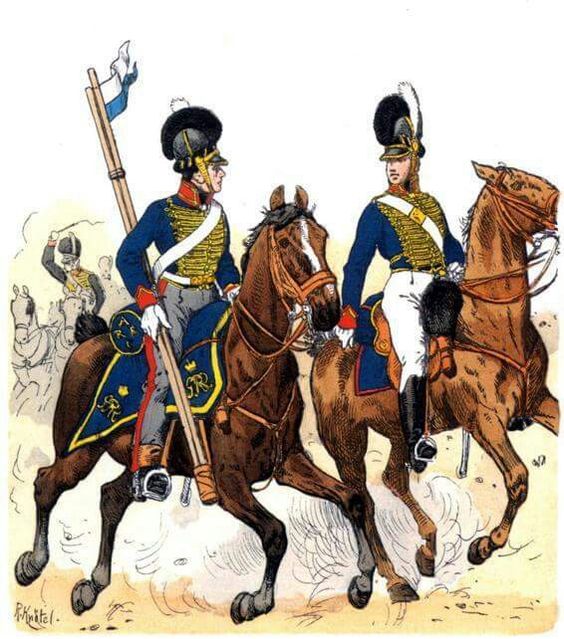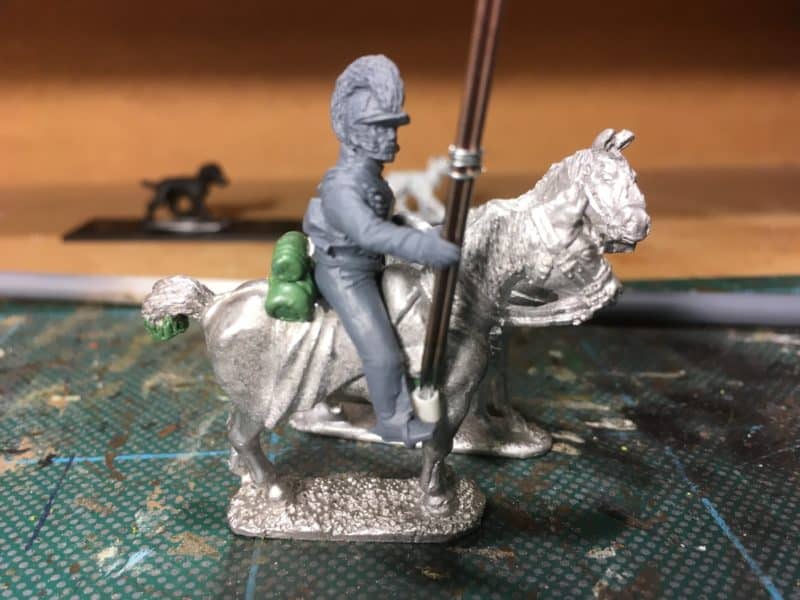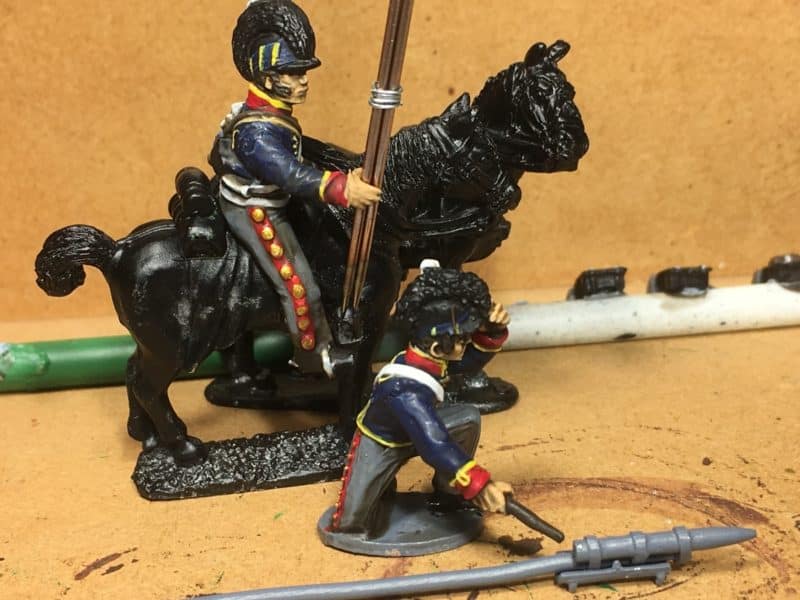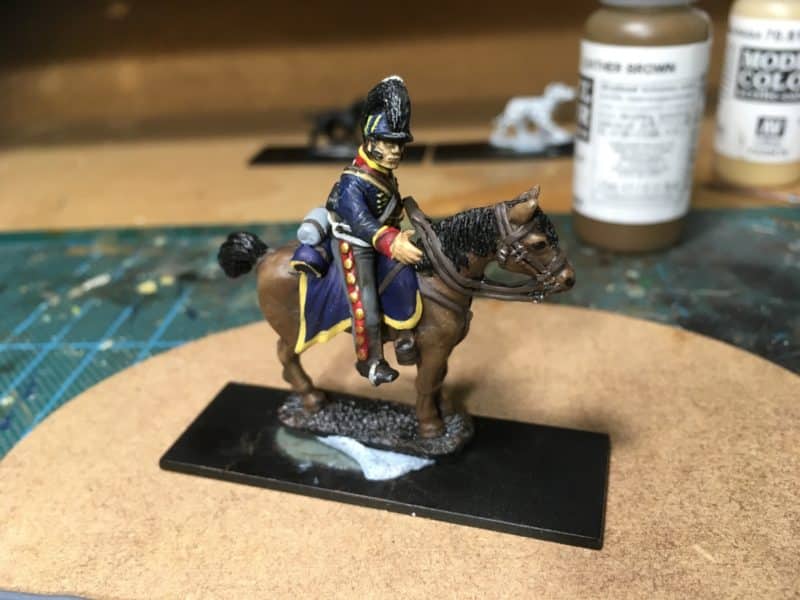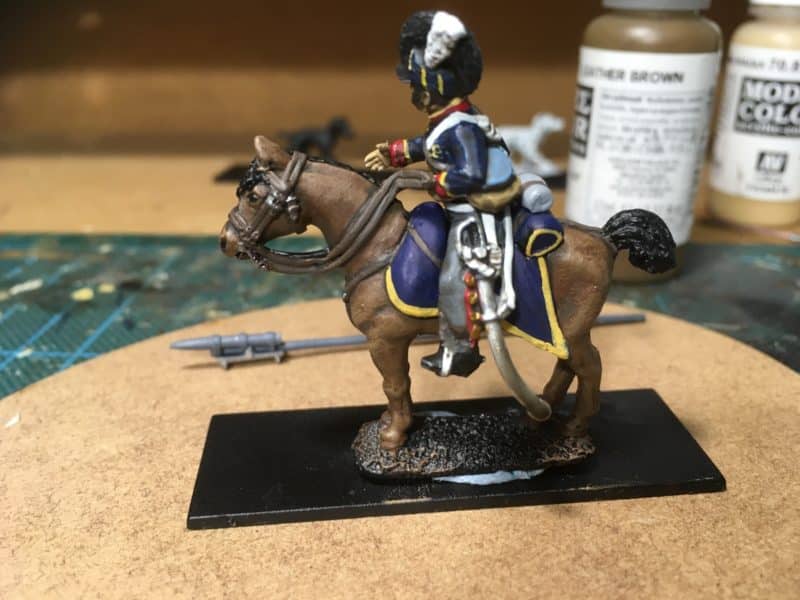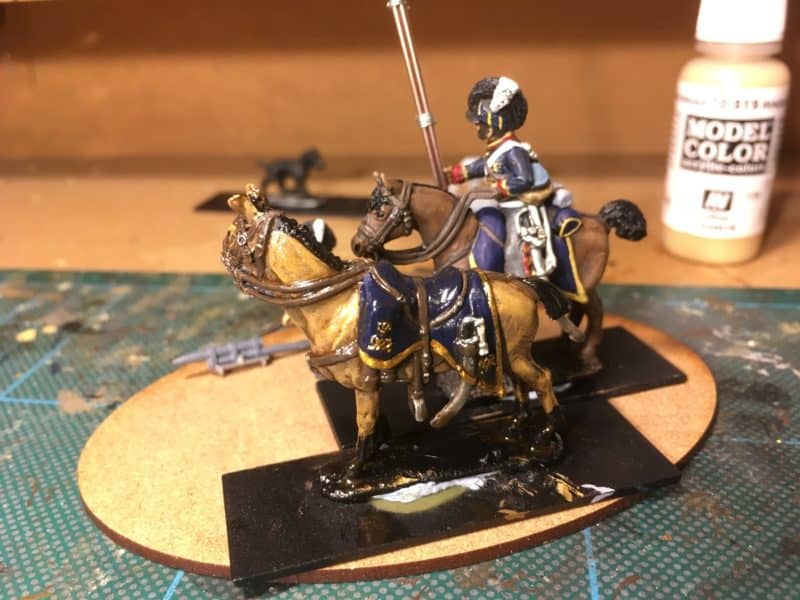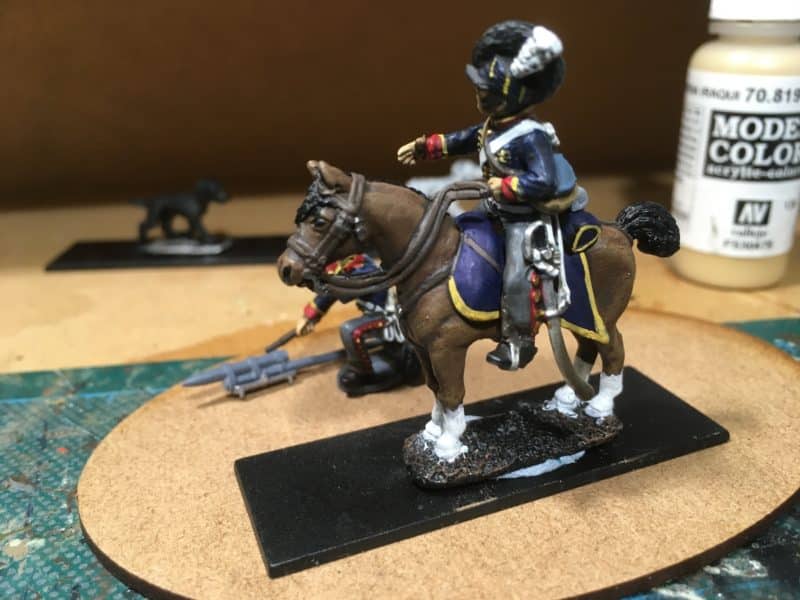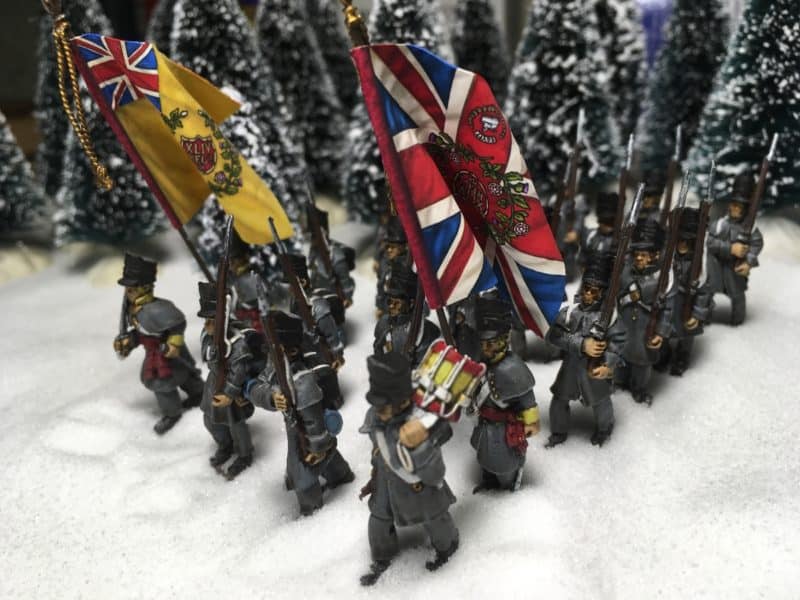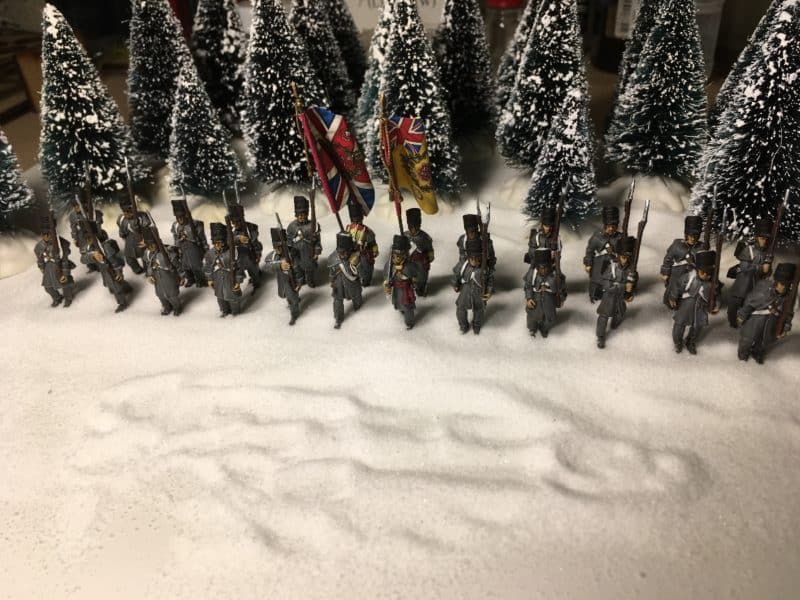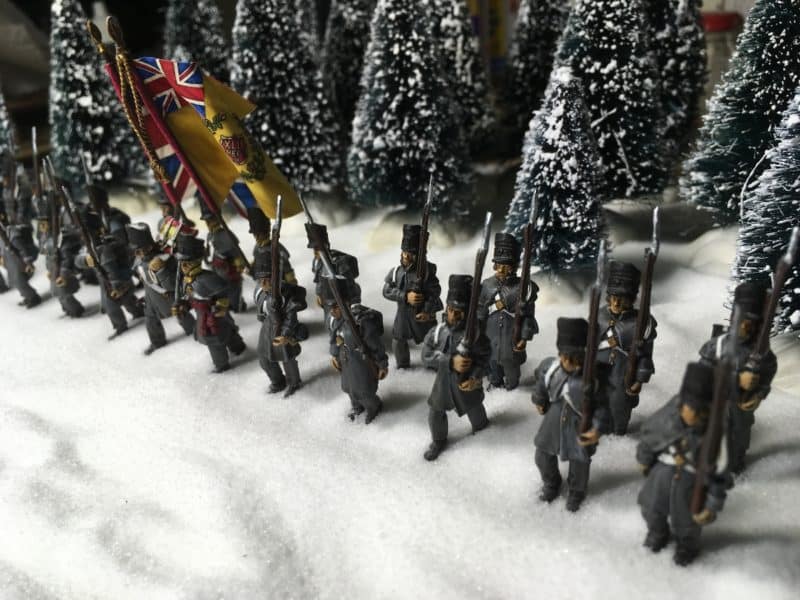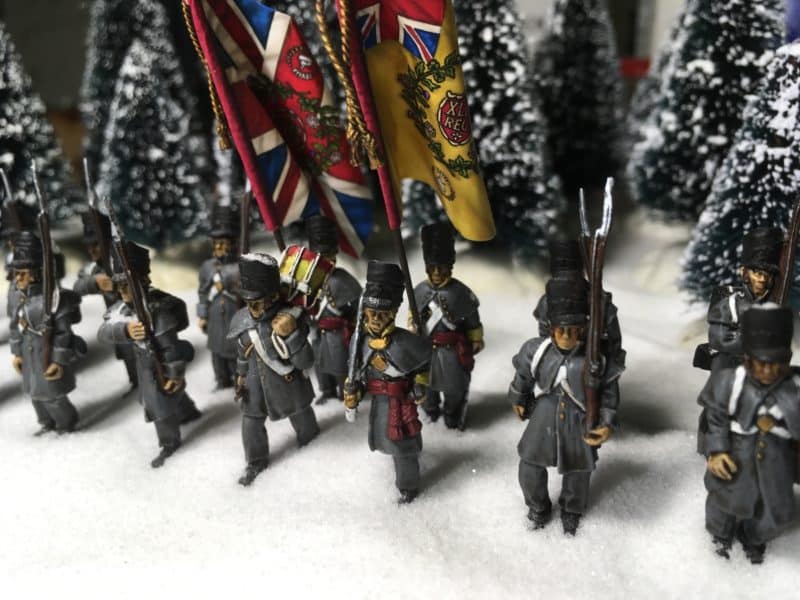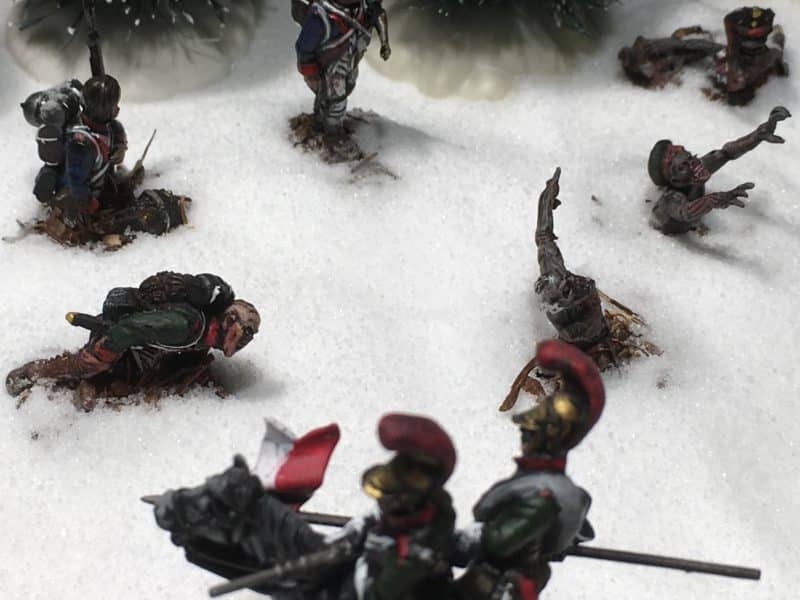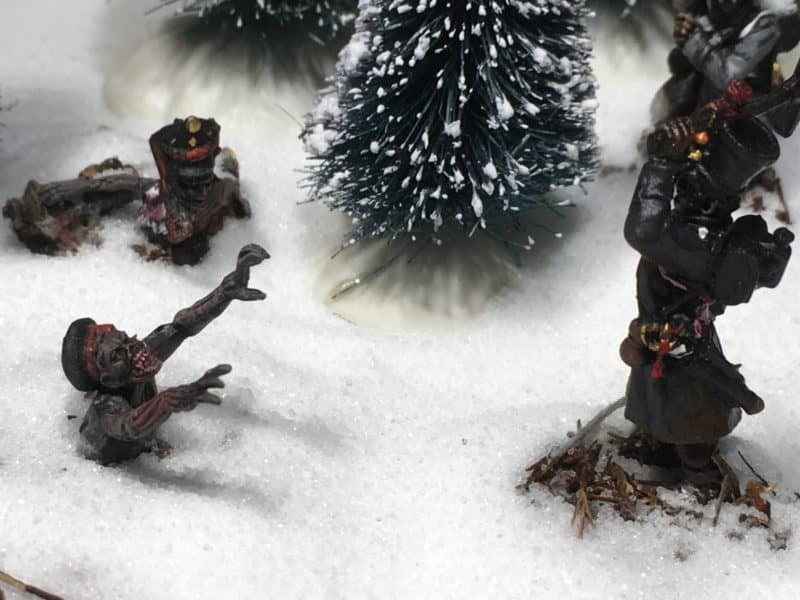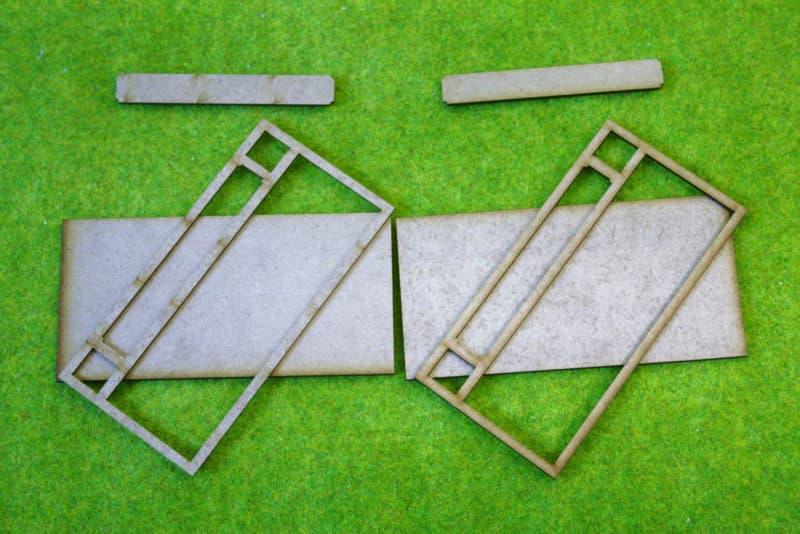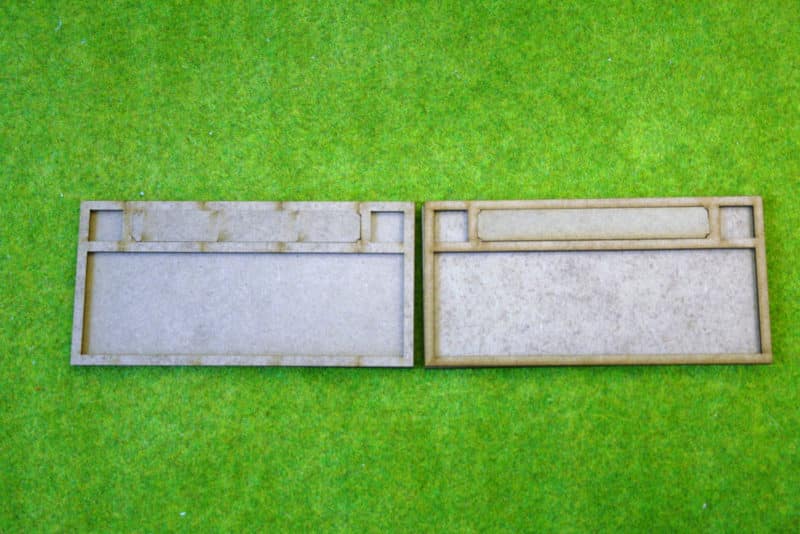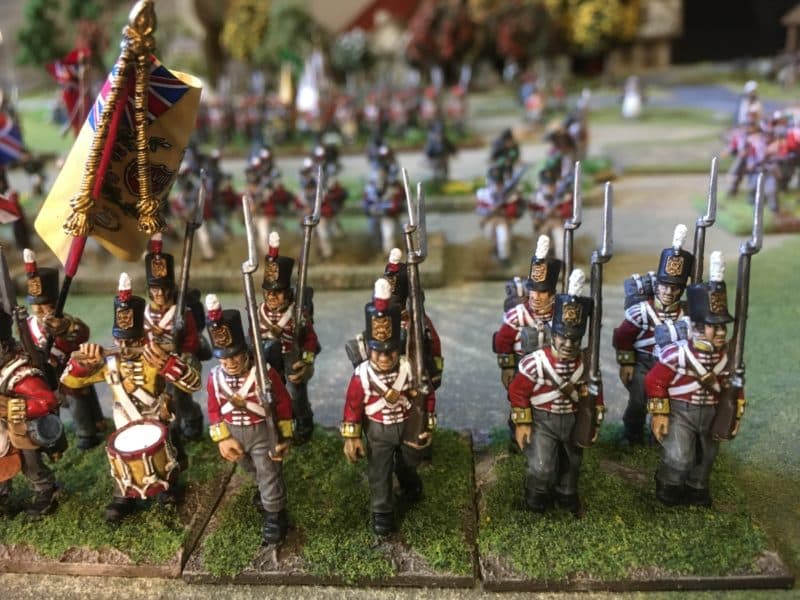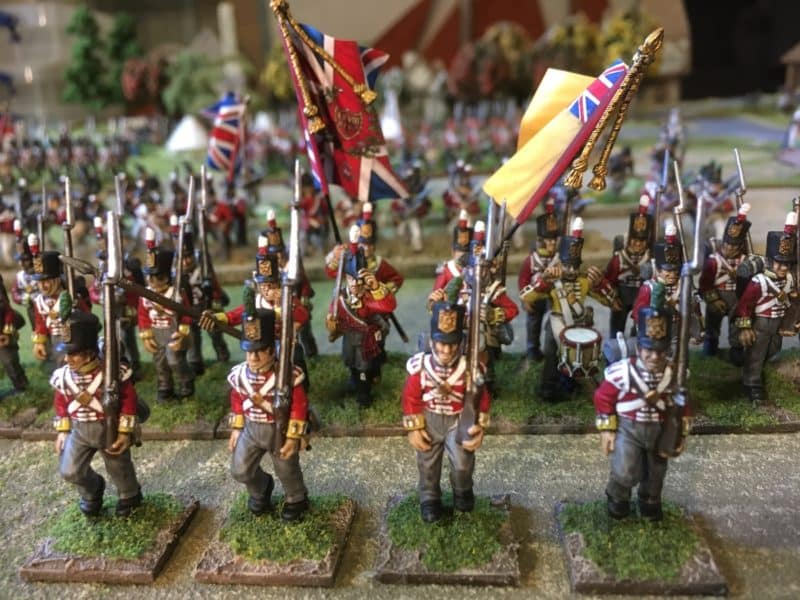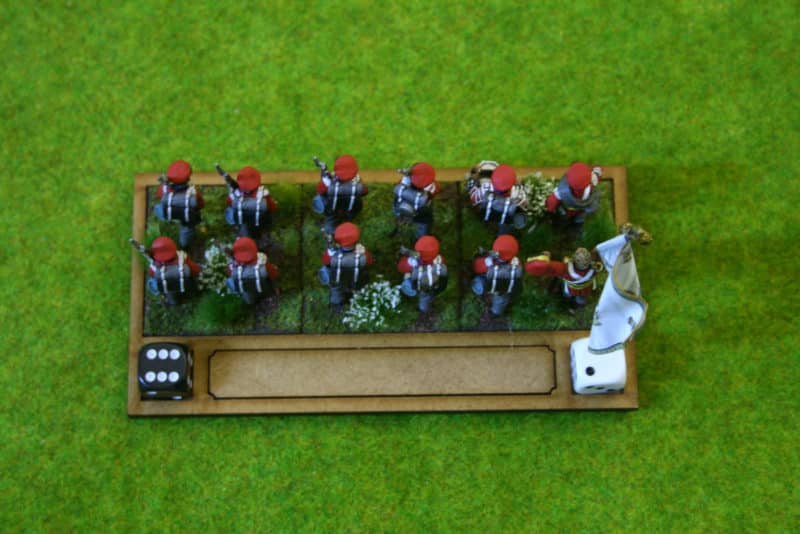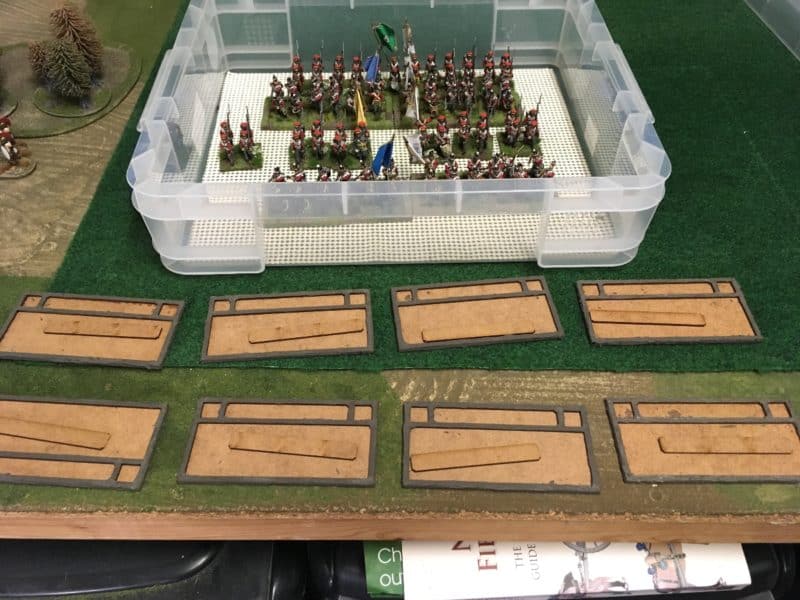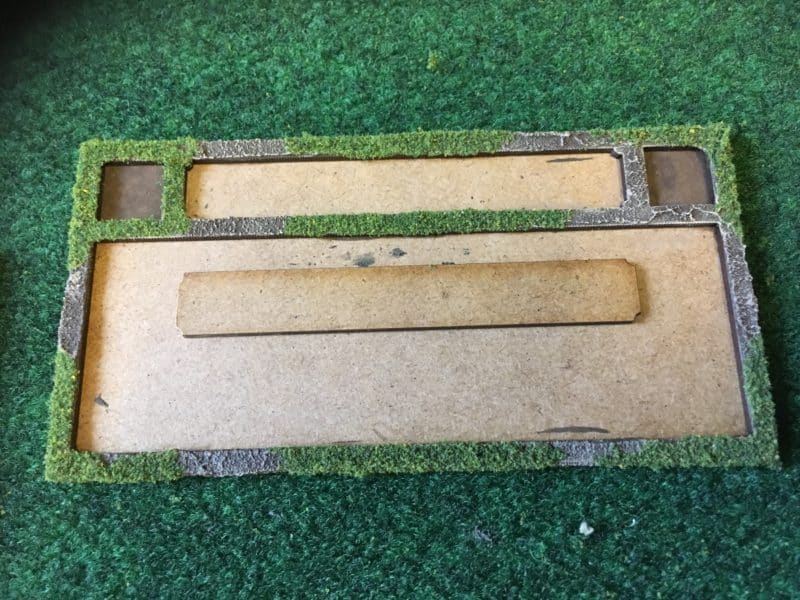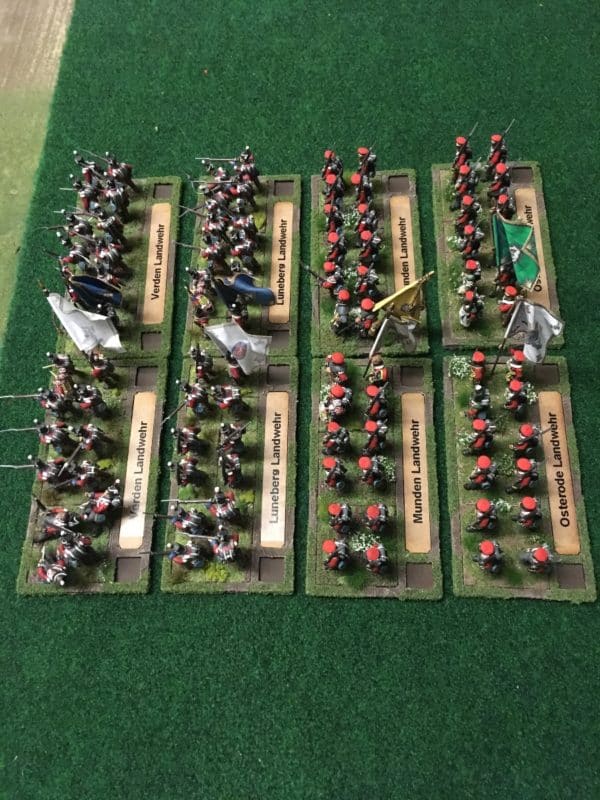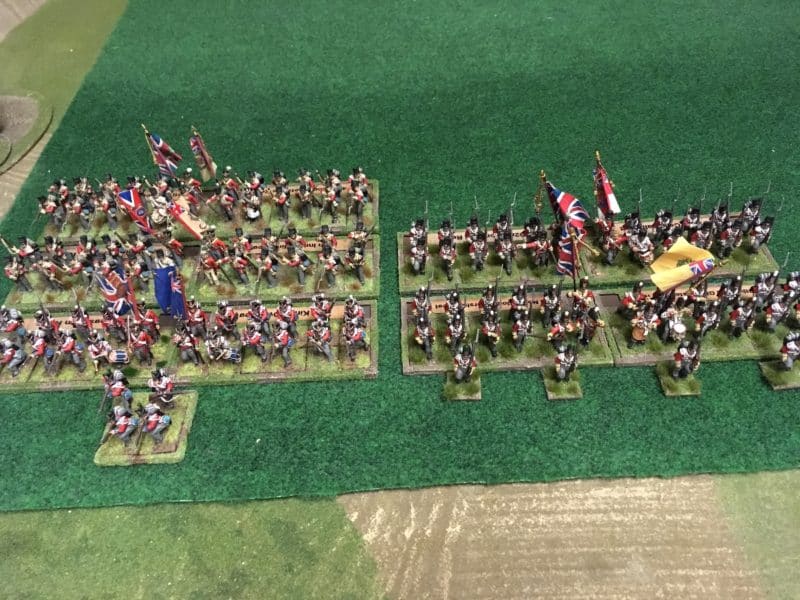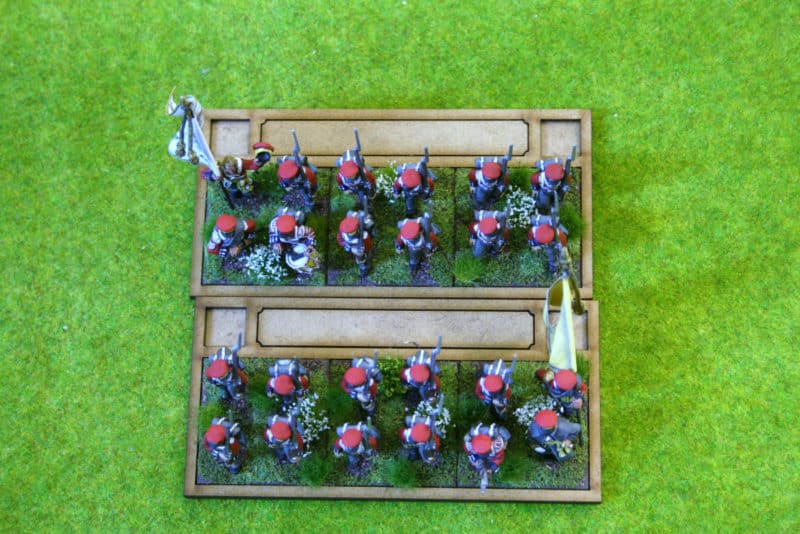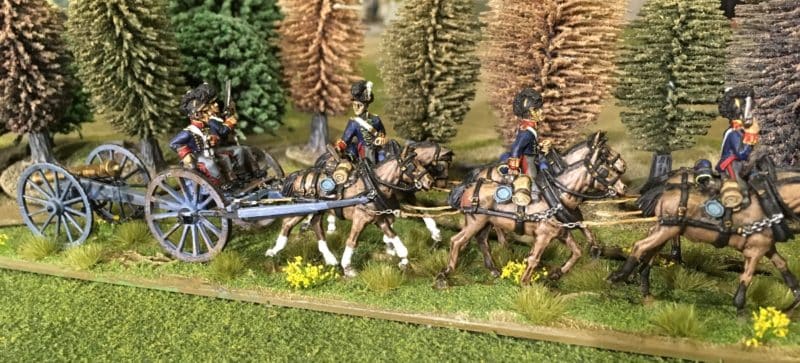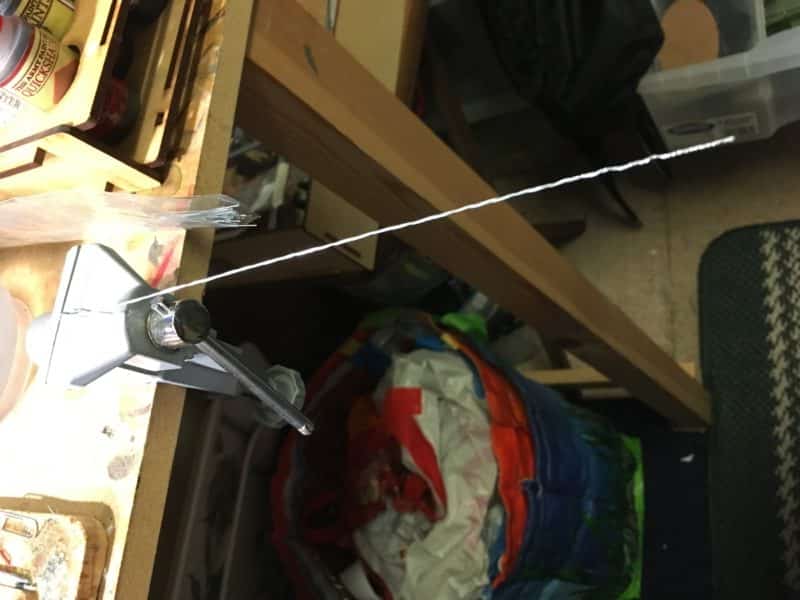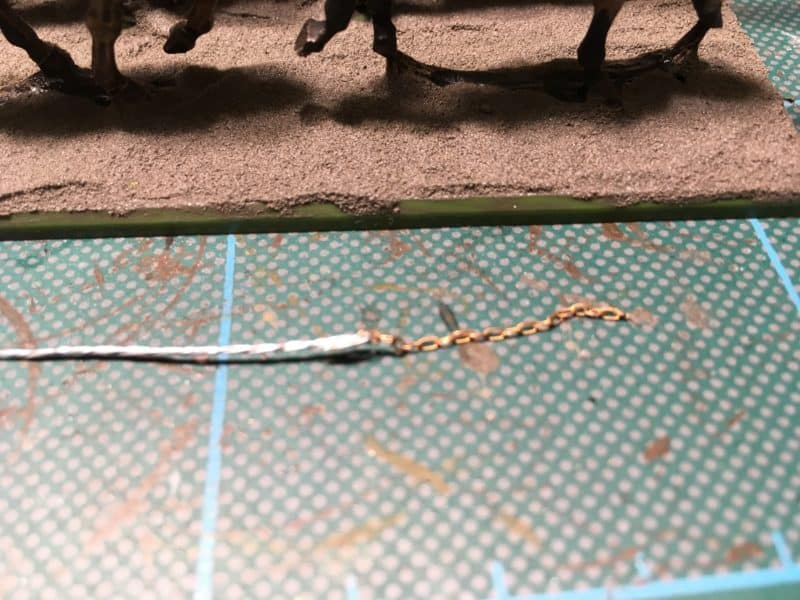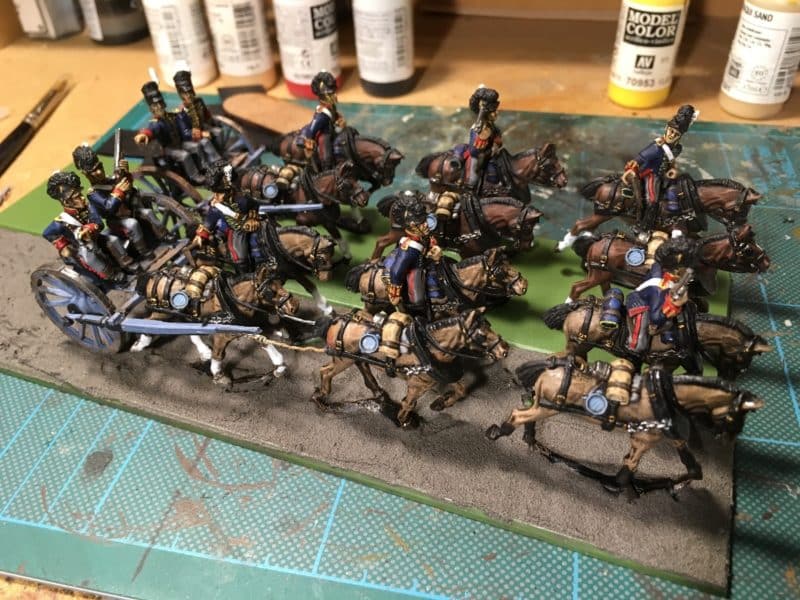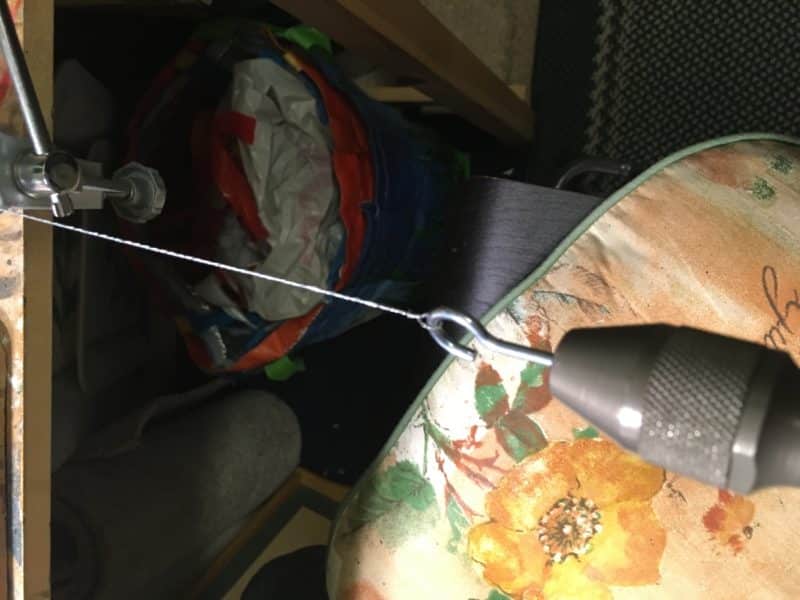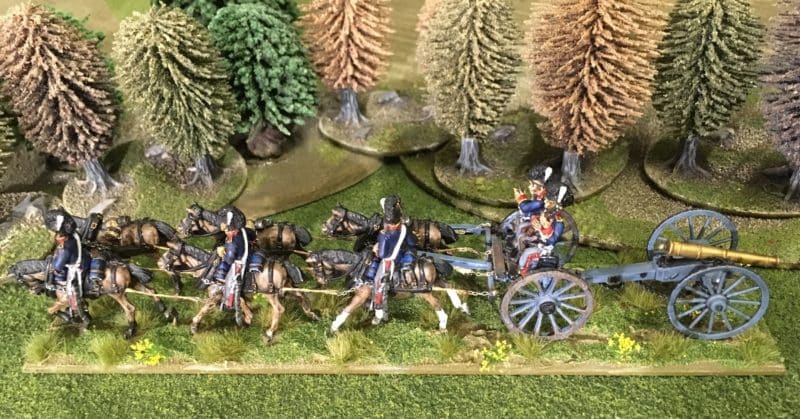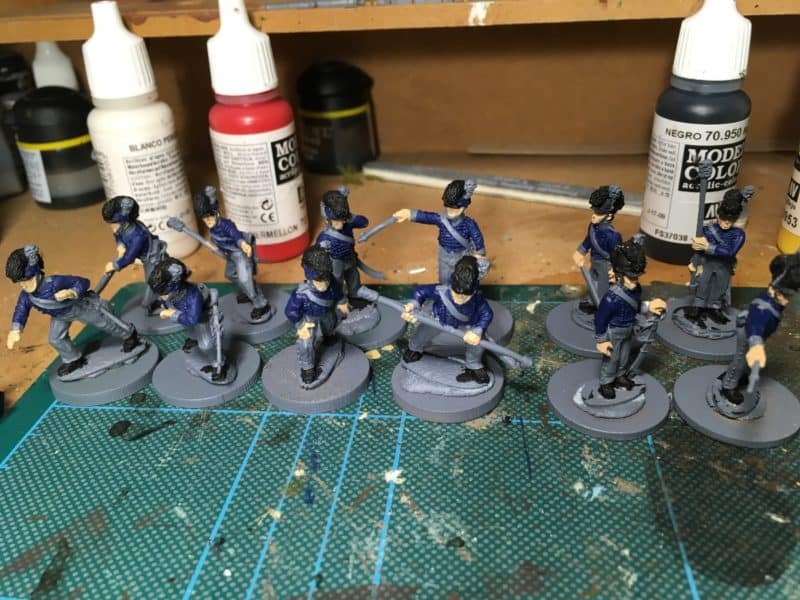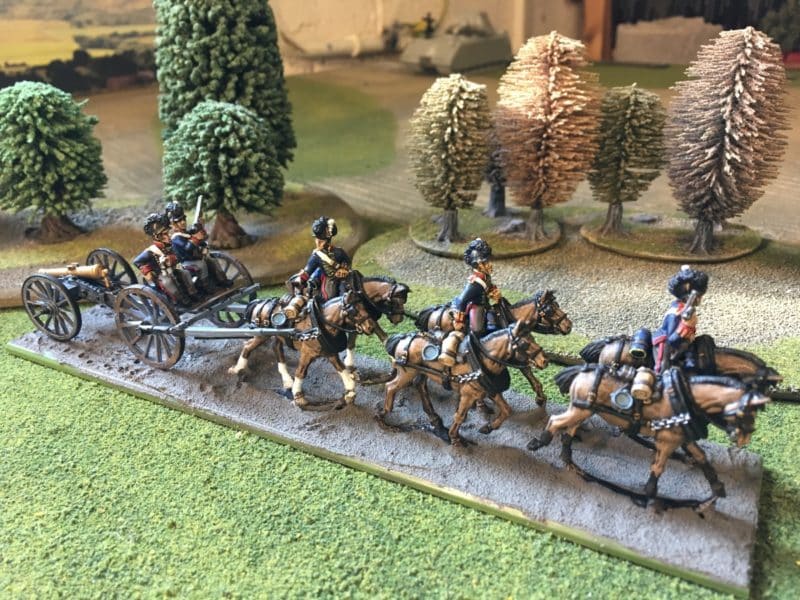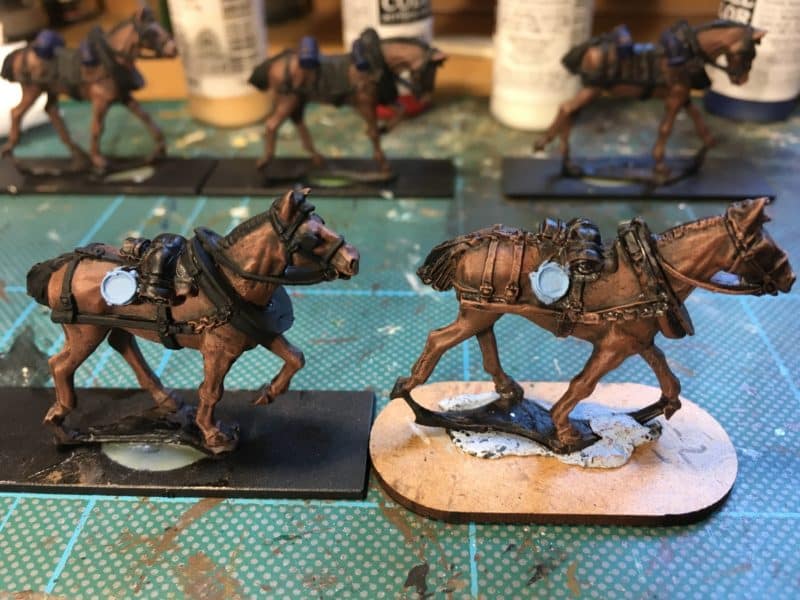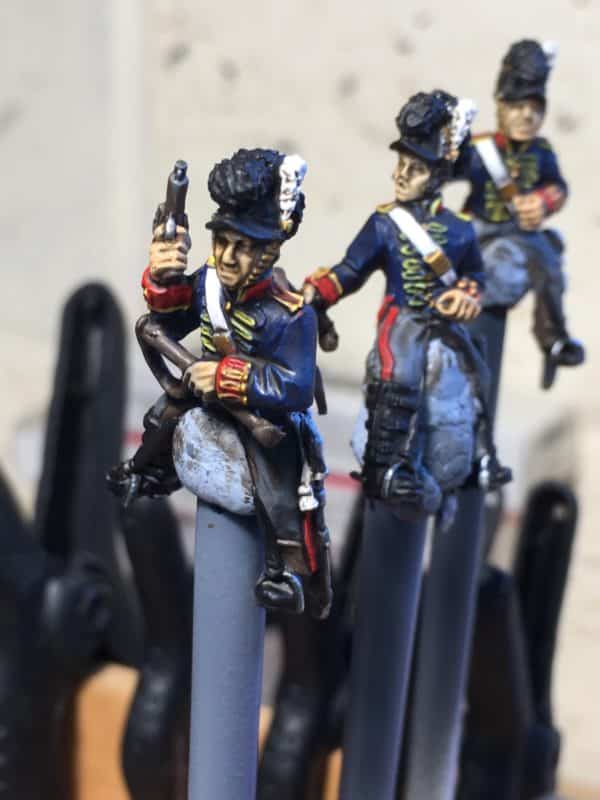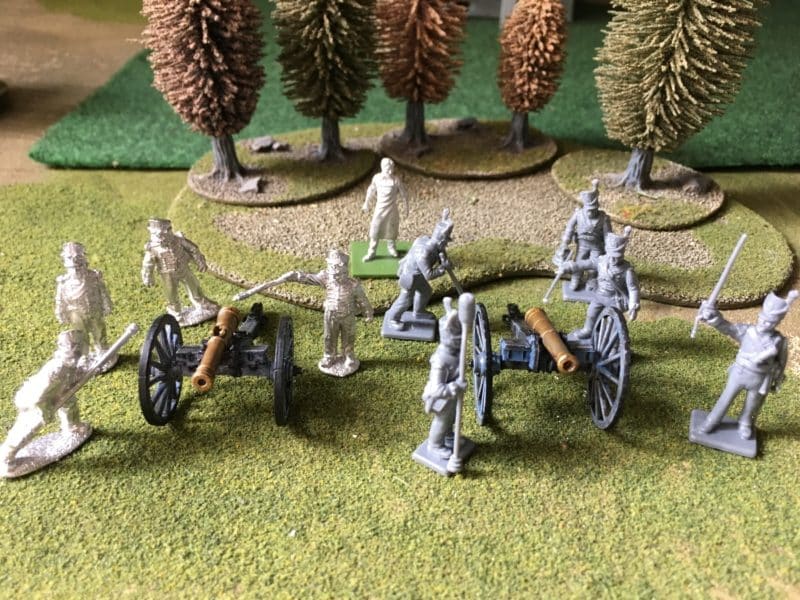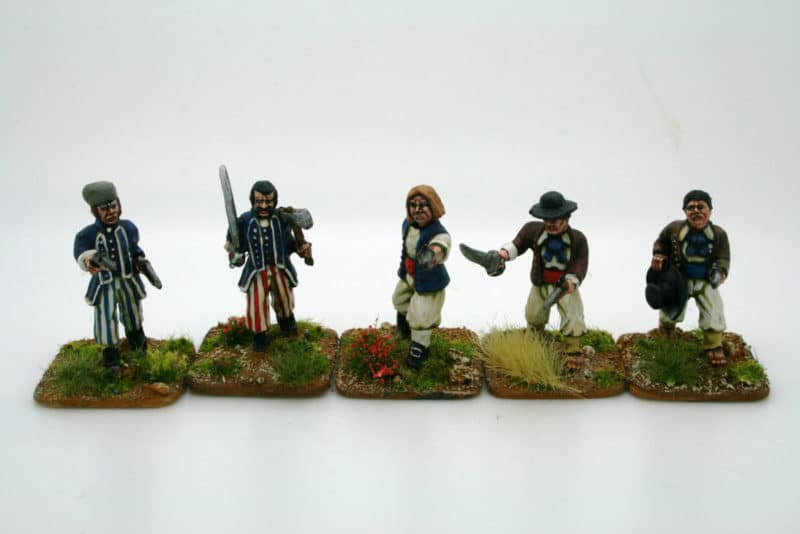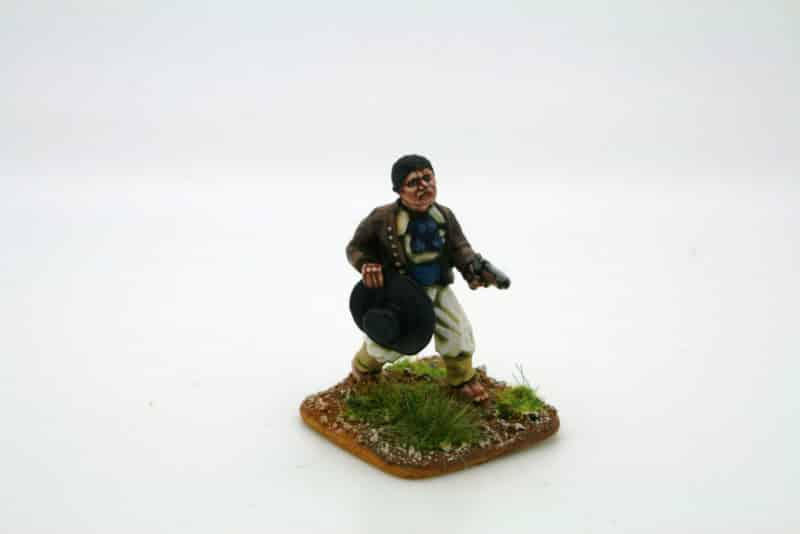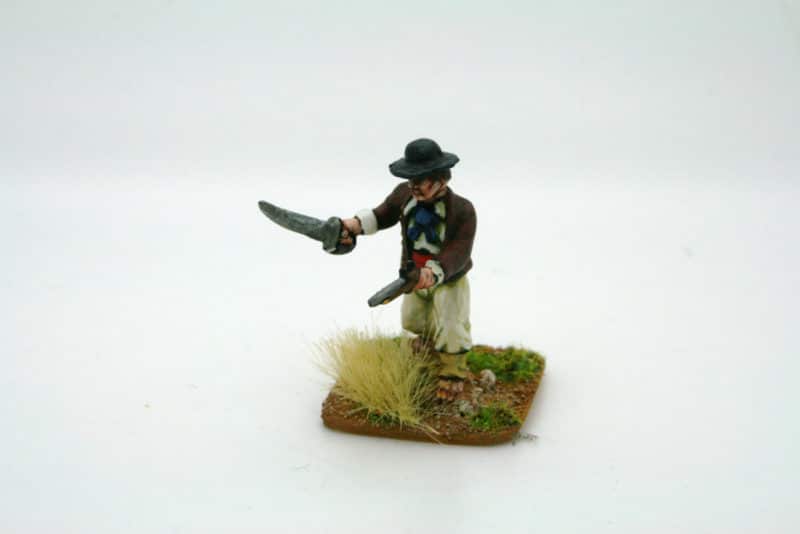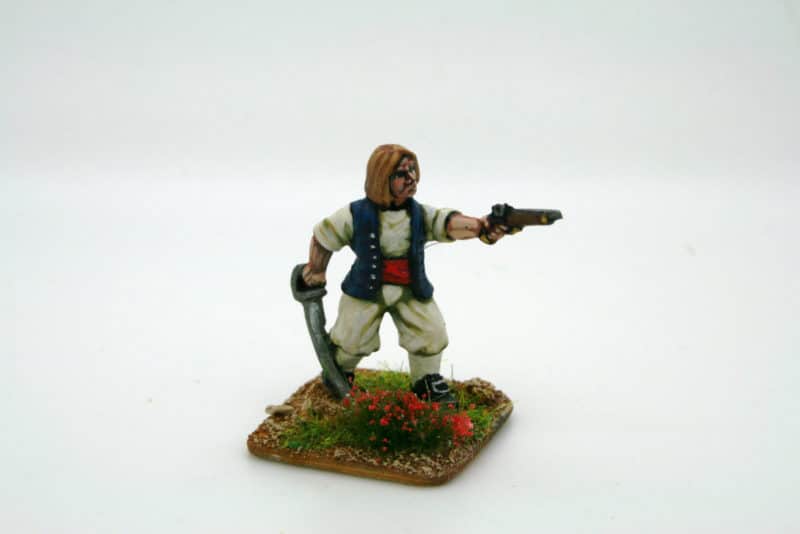I thought that in this weeks blog that I would show the progress on my War of the Roses light cavalry and show the method that I used to paint them. Once I had assembled the riders, I mounted them on painting sticks by drilling a hole in them and mounting them onto a wire. The picture shows them primed with a grey primer and the first two colours, Vallejo flesh and Army Painter plate mail applied.

Riders primed and ready.
The next stage was to block in the main colours, in this case Off white and Flat green. As I mentioned in my previous blog, I have no intention of creating a specific unit or retinue from a battle in the WOTR. The idea is to create a generic army to fight club battles. So although these colours are more appropriate for Tudor bowmen, these troops may well be fighting for a Yorkist retinue!

Block painting the livery
The next picture is a bit of a jump in the painting process! I finished the block painting by using a Buff/white mix on the bow covers and arrow bags; Vallejo old wood was used for the bows and the riding boots were painted with Vallejo Orange brown or light brown to mix things up a bit! The belts and accessories were painted with either leather brown or burnt red. I then brushed on Army painter Dark Tone quick shade. Once dry, the figures were sprayed with a matt varnish and then the white, flesh and metals re highlighted to give a crisp finish.

Finished figures on their horses.

Close up of Light cavalry
Once I was happy with the riders, I finished the basing using my usual technique that I have covered many times before in my blogs.

The completed unit of light Cavalry

Close up of the unit – I have since been back and added some detail to the Commanders face.
With eight mounted bowmen finished, it was on to the remaining four cavalry in the box! I have painted these as Scurrers or Prickers and again, I have chosen the livery colours at random, using burnt red and yellow. Here they are still mounted in their painting sticks!

Scurrers!
Here’s the completed models on their horses. With these now finished I just need another four to make up the unit. I’m not sure whether to get some metals or see if I can just get an extra sprue. In the meantime, I’ve taken a break from the cavalry and I’m now working on some more Footknights and Characters.

Light Cavalry on the prowl!
I do need to add some flags and Standards to the unit – I’ve just received some very nice standards from Citadel six flags but have yet to try them. My army is approaching completion, with some 200+ figures now painted and based. It is lacking flags though – watch this space!
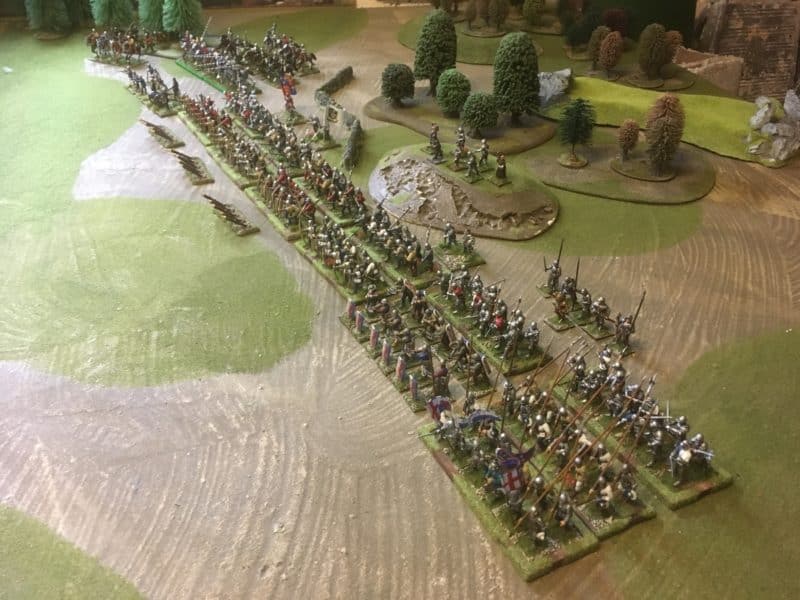
War of the Roses Army
THE COMMERCIAL BIT
Almost all of the paints, miniatures, bases, basing materials and anything that you are likely to need for your hobby are available POST FREE from my shop here:
Perry’s WOTR plastic range are here:
You can find all the Vallejo Model colour paints here. If you don’t want to browse, just enter the paint number into the shop search bar;
You can find the Vallejo texture paste here:
‘Never mind the Bill Hooks’ will be available as a full colour supplement with the June edition of Wargames Illustrated. If you would like the current issue, click here:
Happy Modelling!


